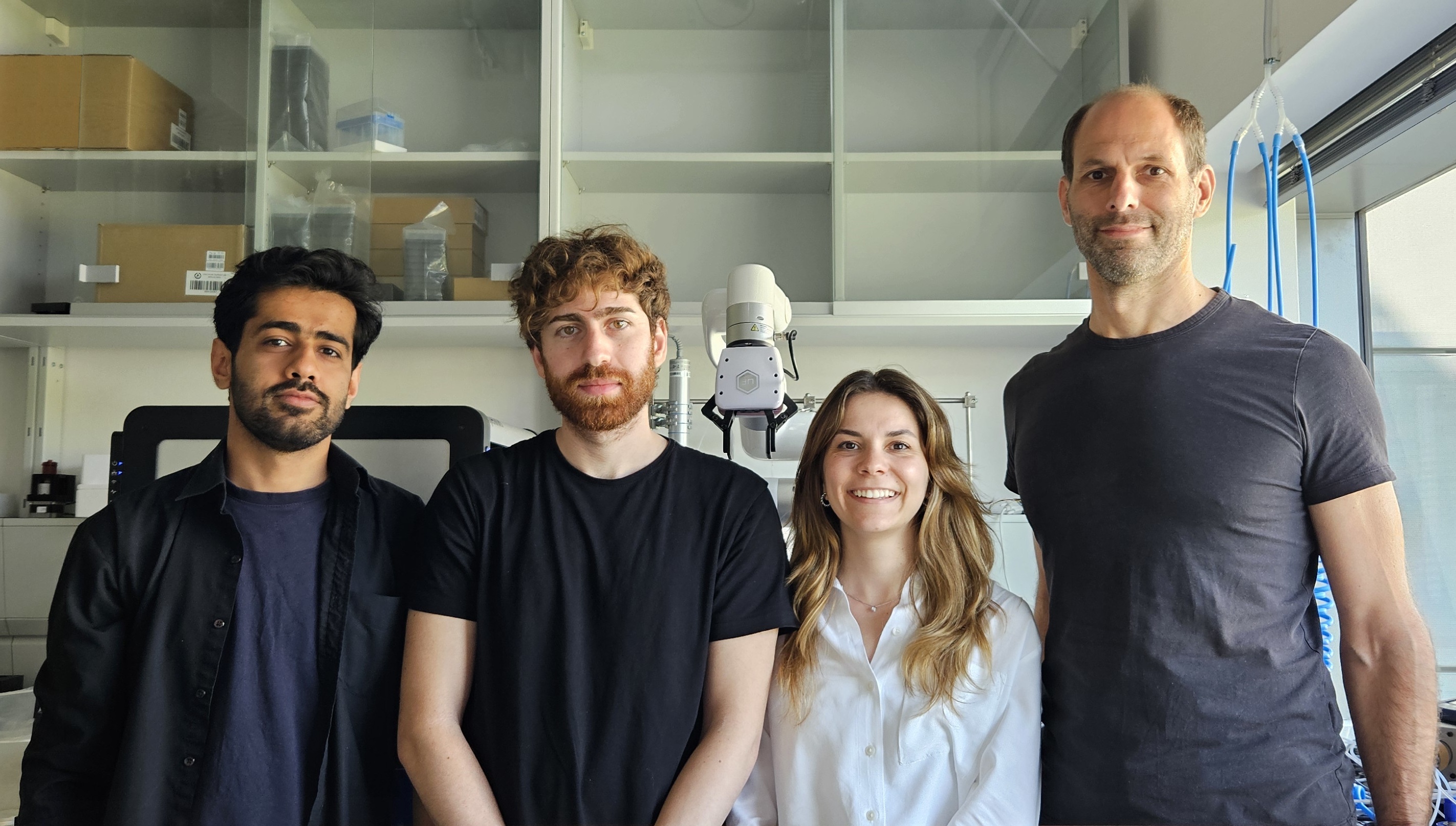
Source: privat
Automated chemical synthesis with robotic-driven processes and direct feedback from various characterization techniques via machine learning and artificial intelligence in a “self-driving lab” opens up a plethora of future applications, especially in material science, with important contributions to safety in technology and chemistry.
An automated lab driven by machine learning or an artificial intelligence can make decisions autonomously during a chemical synthesis process and by doing so, perform a targeted and accelerated search for new materials with improved or highly desirable properties. Furthermore, automated process control allows for a reproducible and standardized material synthesis and development of materials without exposing humans to potentially hazardous chemicals or conditions, and is entirely based on reproducible, reliable, and understandable processes, which is especially important in the context of the “reproducibility crises” as well as the production of reference materials. Both reproducible and ontology-based syntheses and reference materials are important contributors to safety in technology and chemistry by ensuring that measurements and syntheses produce reliably data and materials.
Team and Collaboration partners
The topic provides interesting challenges for contributors with various backgrounds and expertise. Hence, the team, the collaboration partners, and the topics are highly interdisciplinary, from synthetic and analytical chemists to engineers and computer scientists, from controlling and integrating hardware components into an automated workflow to the synthesis and characterization of nano and advanced materials, from machine learning and artificial intelligence for autonomous process control to the design of novel (or the improvement of already known) materials with new properties that can enhance the safety in technology and chemistry.
Research Areas
Self-Driving Labs and Material Acceleration Plattforms
A “self-driving lab“ or ”material acceleration platform” combines the use of machine learning, lab automation, and robotics in (material) science and research. Such a lab or platform usually consists of several modular building blocks which can – orchestrated by machine learning or an artificial intelligence – perform a series of experiments autonomously and iteratively, characterize the obtained materials automatically, and analyze and evaluate the results independently. This enables an autonomous and targeted search, production, and improvement of materials with desirable properties in a feedback loop, helping scientists to explore the vast space of possible materials and reaction parameters and find new materials with improved properties in an accelerated and targeted way.
In particular, we are working on employing these platforms for the synthesis, characterization, and optimization of nano and advanced materials [1]. These material classes often have special requirements regarding the modular building blocks required for their syntheses, purification, and characterization. Besides using these platforms for synthesizing and optimizing these materials themselves, we also work on developing software and hardware tools for integrating and controlling components that are necessary for producing and characterizing them, as well as integrating the components in a (closed) feedback loop [2]. Furthermore, we work on training, applying, and benchmarking different algorithms for machine learning and artificial intelligence for analyzing and interpreting characterization results [3] and for the targeted search for optimized materials. Furthermore, we are working on making the creation of workflows for these platforms more user-friendly by developing specific AI language models and specialized graphical user interfaces [4]. These also allow the extraction of knowledge graphs from the workflows and help ensure that all relevant synthesis parameters, as well as the generated data and metadata, are machine-readable and processable. In this context, we are also working on ontologies for the precise and interoperable semantic description of the syntheses, which enables reliable exchange of synthesis protocols and workflows across different platforms.
All these efforts contribute to making the synthesis, use, and properties of these materials safer and more reliable.
Complex Nano and Advanced Materials
Simply put, nanomaterials are materials with dimensions ”in the nanometer range”, with one nanometer being a billionth of a meter (i.e., approximately 100 000 times thinner than a human hair). Due to this extremely small size alone, nanomaterials can have properties that the same material would not have at all (or to a much lesser extent) if it was millimeter, centimeter, or meter sized. The term “advanced materials” is more general and loose, and typically not tied to a certain length scale or dimension, but rather comprises materials that are specifically designed and produced by manipulating inorganic or organic substances on several length scales (down to the molecular level) to rationally and intentionally endow them with properties that can by far surpass those of naturally occurring substances. Due to these characteristics, such materials find applications in various fields, e.g., health care, building materials, energy production and storage, mobility and transport, telecommunication, consumer products, and many more.
Currently, we are working on the design, synthesis, functionalization, and optimization of nano and advanced materials that react actively or passively to internal or external stimuli for applications in (antimicrobial) coatings [5] and as sensors. Such behaviors often require complex architectures such as core-shell particle systems, or particles that have a specifically designed and well-defined surface chemistry. Another topic we are working on is the reliable, reproducible, and automated synthesis of these materials as reference materials.
Research Topics
- Development and use of Self-Driving Labs and Materials Acceleration Platforms for the synthesis, characterization, and optimization of complex nano and advanced materials
- Synthesis and design of novel nano and advanced materials with applications, e.g., as antimicrobial coatings or as sensor materials
- Efficient data and metadata management, and machine learning and AI based algorithms for autonomous experiment planning, execution, and data analysis
- Reproducible, reliable, and understandable syntheses of nanomaterials, e.g., for use as reference materials
References
[1] M. Zaki, C. Prinz, B. Ruehle, ACS Nano 2025, 19(9), 9029-9041
[2] https://github.com/BAMresearch/MAPz_at_BAM/tree/main/Minerva
[3] B. Rühle, J. F. Krumrey, V. D. Hodoroaba, Sci Rep 2021, 11, 4942
[4] B. Ruehle, Digital Discovery 2025, 4, 1534 – 1543
[5] C. Duarte Bernardino, M. Lee, Q. Ren, B. Ruehle, ACS Appl Mater Interfaces 2025, 17(8), 12507-12519


